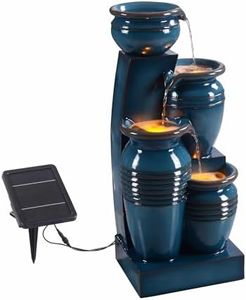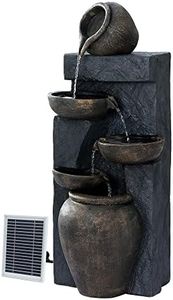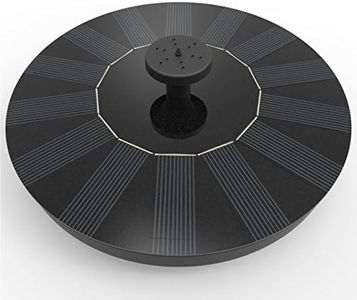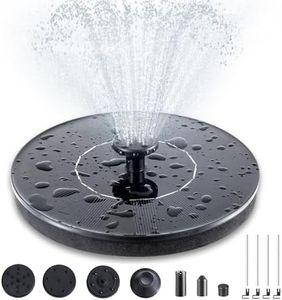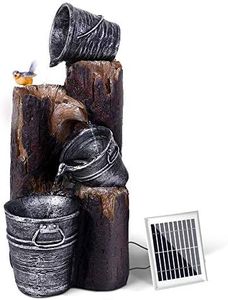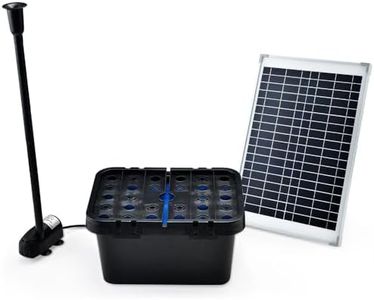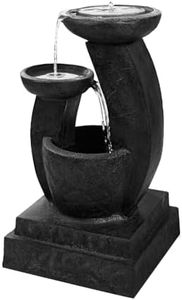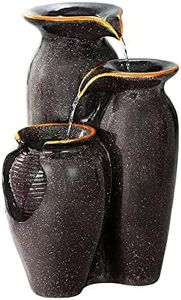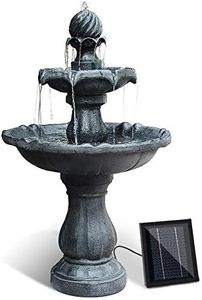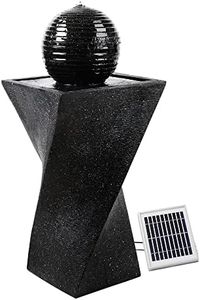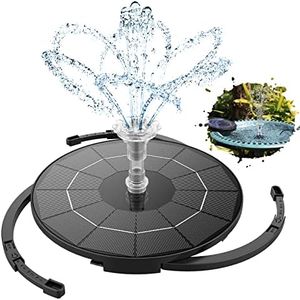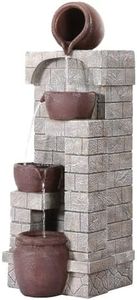We Use CookiesWe use cookies to enhance the security, performance,
functionality and for analytical and promotional activities. By continuing to browse this site you
are agreeing to our privacy policy
10 Best Solar Fountains
From leading brands and best sellers available on the web.By clicking on a link to a third party's website, log data is shared with that third party.
Buying Guide for the Best Solar Fountains
When picking a solar fountain, it's important to think about where and how you'll use it. Solar fountains use sunlight to power a water pump, creating pleasing water movement and sometimes a decorative spray. This means you don't need any electrical wiring, making them perfect for gardens, patios, birdbaths, or small ponds. The right solar fountain for you depends on how much sunlight your space gets, the kind of effect you want, and how much maintenance you are willing to handle. Focus on the important specifications to ensure your fountain meets your expectations.Solar Panel Power (Wattage)The solar panel power is measured in watts and indicates how efficiently the fountain can convert sunlight into electricity for the pump. Higher wattage panels supply more power, resulting in stronger or more reliable water flow, especially in cloudy conditions. Lower wattage models work best in areas with lots of direct sunshine, while higher wattage ones handle low-light conditions better. Think about the average sunlight in your area—choose higher wattage for less sunny locations and standard wattage if your fountain will sit in bright, direct sunlight most of the day.
Pump Flow RateThe flow rate represents how much water the pump can move, usually measured in liters or gallons per hour (L/h or GPH). A higher flow rate means a bigger, higher fountain spray, while a lower rate produces gentler movement suitable for birdbaths or quieter features. If you’re looking for an eye-catching display or want to oxygenate a pond, go for a higher flow rate. For small, decorative, or peaceful settings, a modest flow is often ideal.
Battery BackupSome solar fountains include a built-in battery that stores excess solar energy, letting the fountain run even when clouds pass by or after sunset. This keeps the water flowing smoothly rather than stopping abruptly when the sun goes behind a cloud. If you want continuous operation or plan to use the fountain in the late afternoon, opt for a battery backup. In sunny climates with reliable daylight, a battery may not be necessary.
Spray Heads and PatternsMany solar fountains come with a selection of spray heads or nozzles that create different water patterns, such as single streams, multi-sprays, or bubbling effects. These let you change the looks and sounds of your fountain. If you enjoy variety or want to customize the effect for different occasions, look for a fountain with several spray head options. If you're happy with a basic single spray, a simpler model will do.
Ease of Installation and CleaningSolar fountains range in complexity from simple floating models to those that need to be anchored or installed with separate panels. Consider how easy it is to set up and access the pump for cleaning, as regular maintenance is important for long-term performance. If you prefer hassle-free use, choose a model that’s easy to assemble and clean, especially if leaves or debris might fall into your fountain.
Durability and MaterialsThe materials used in solar fountains include plastic, resin, metal, and glass. Durable materials will last longer outdoors and stand up to changing weather. Plastic and resin are lightweight and affordable but may wear faster. Metal and glass are more robust but can be heavier and more fragile. Pick a material that matches your style and fits the climate where you’ll use your fountain—if you want something long-lasting, prioritize sturdier materials.
